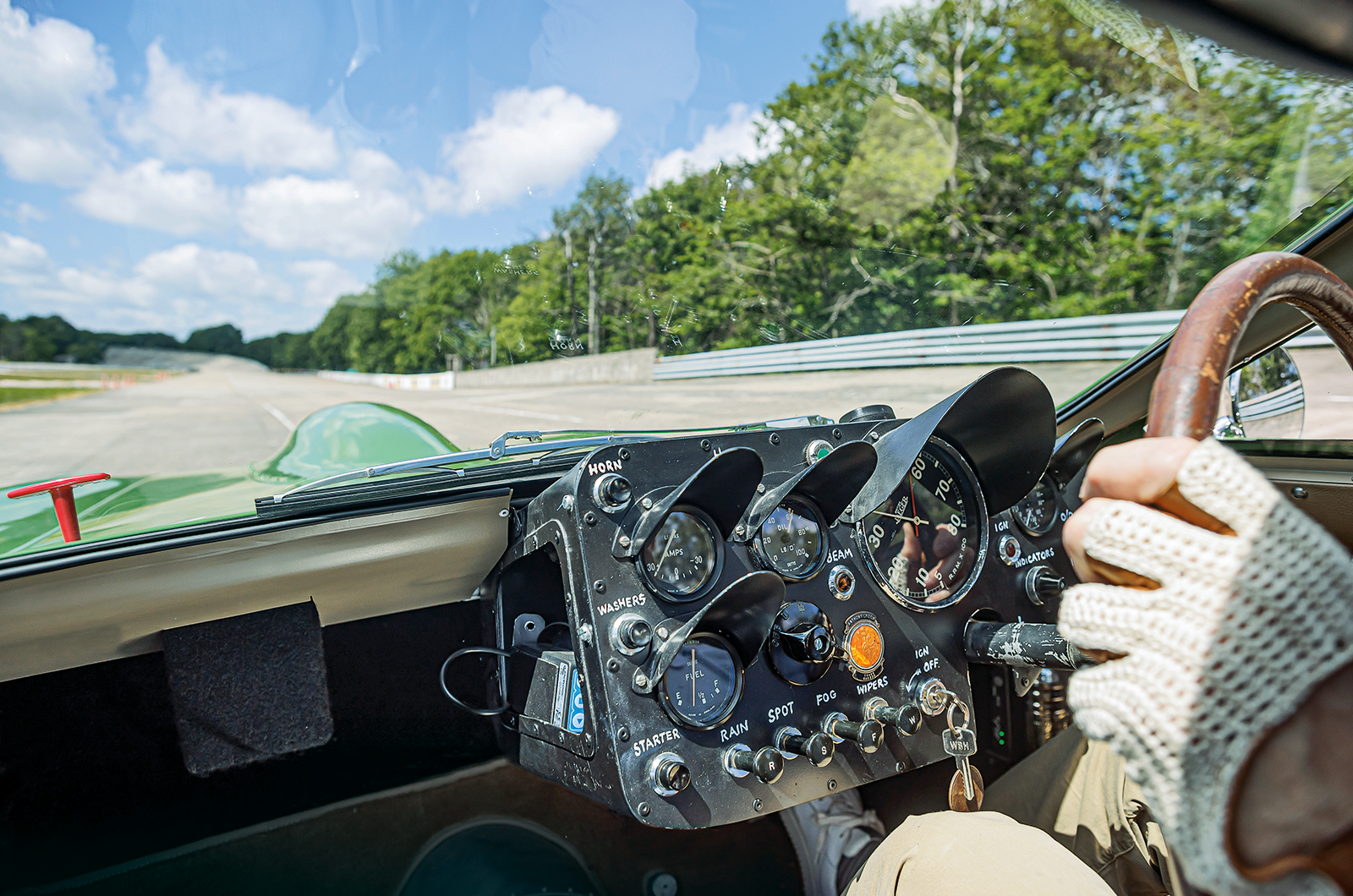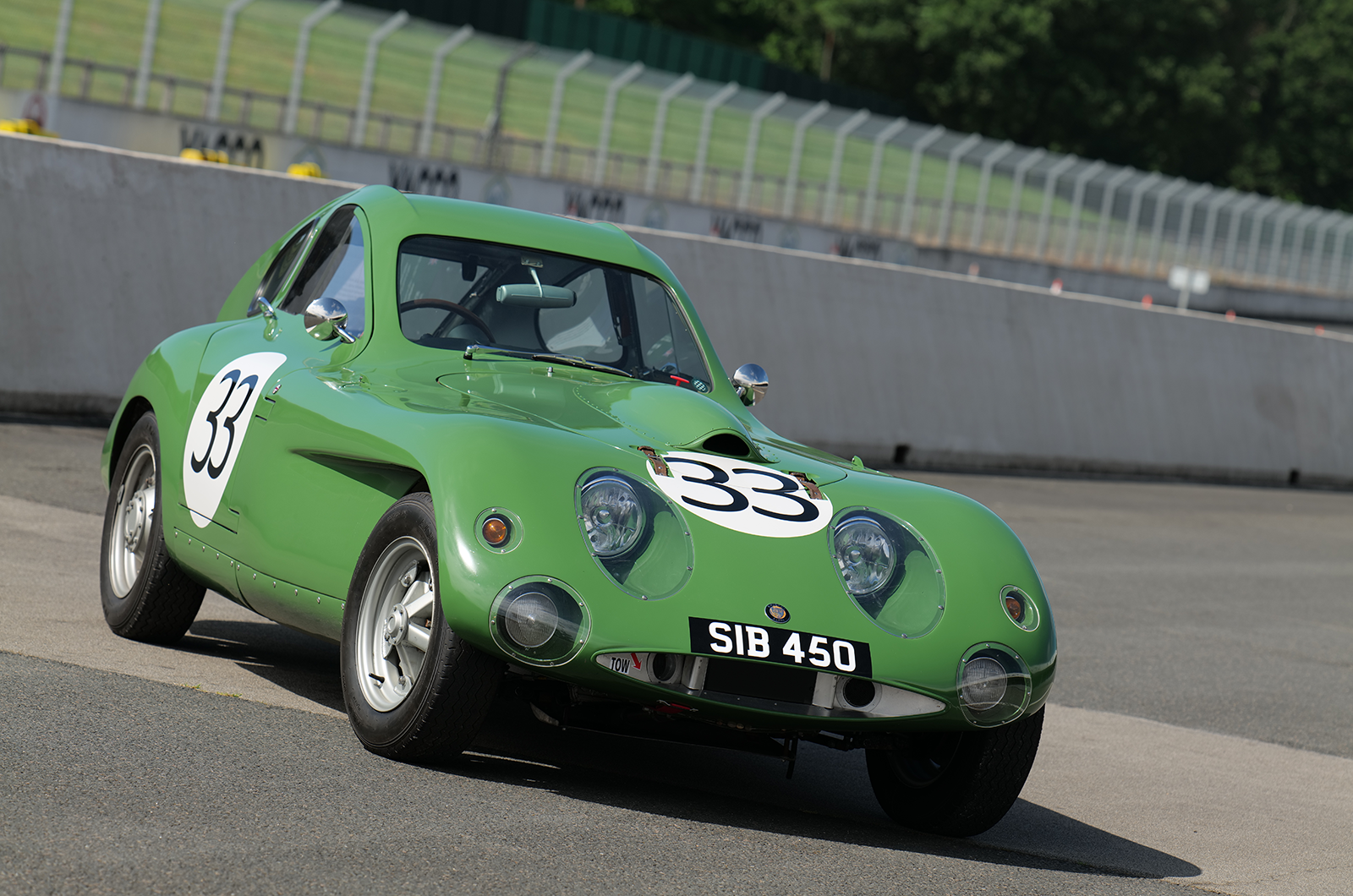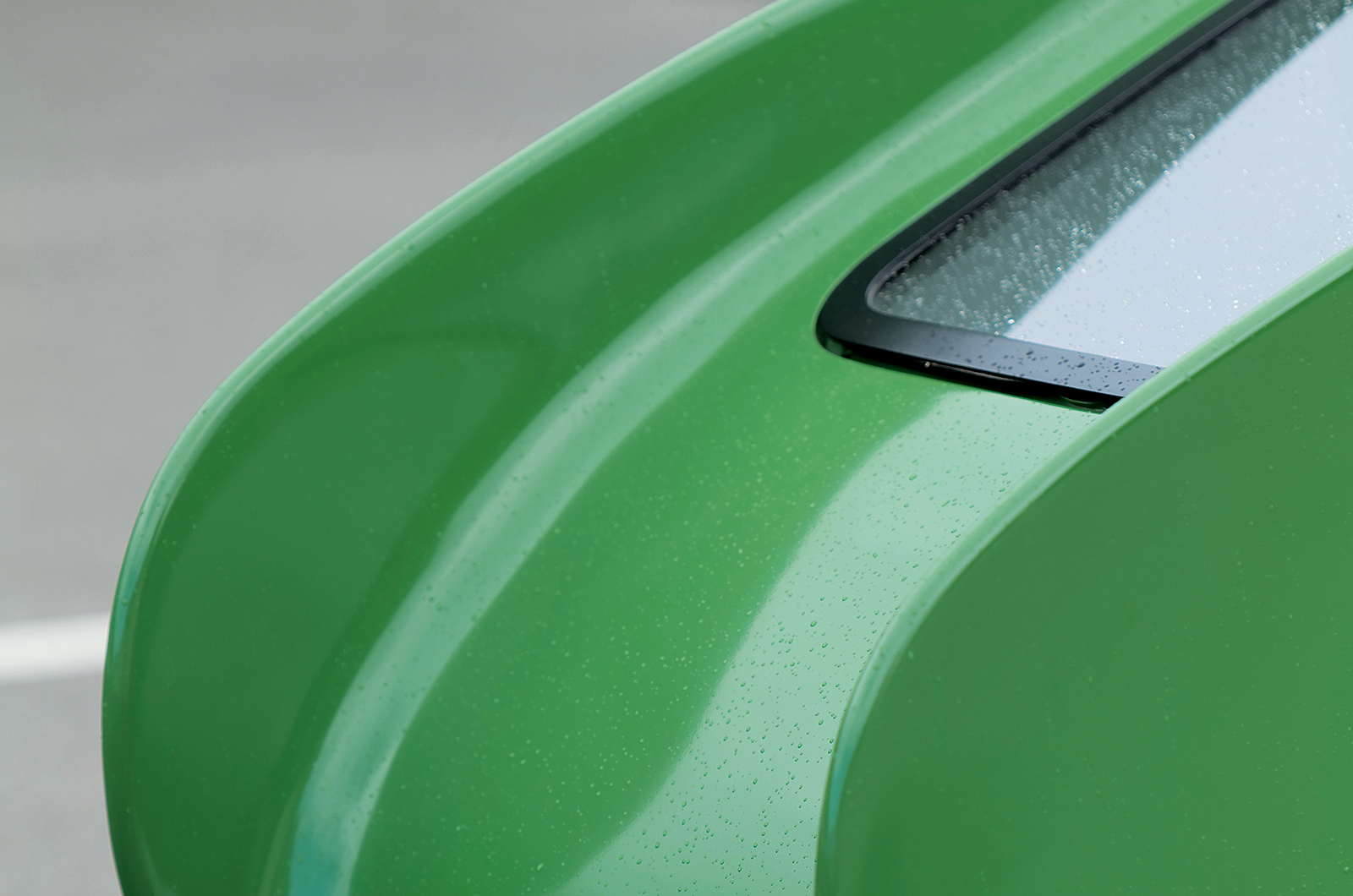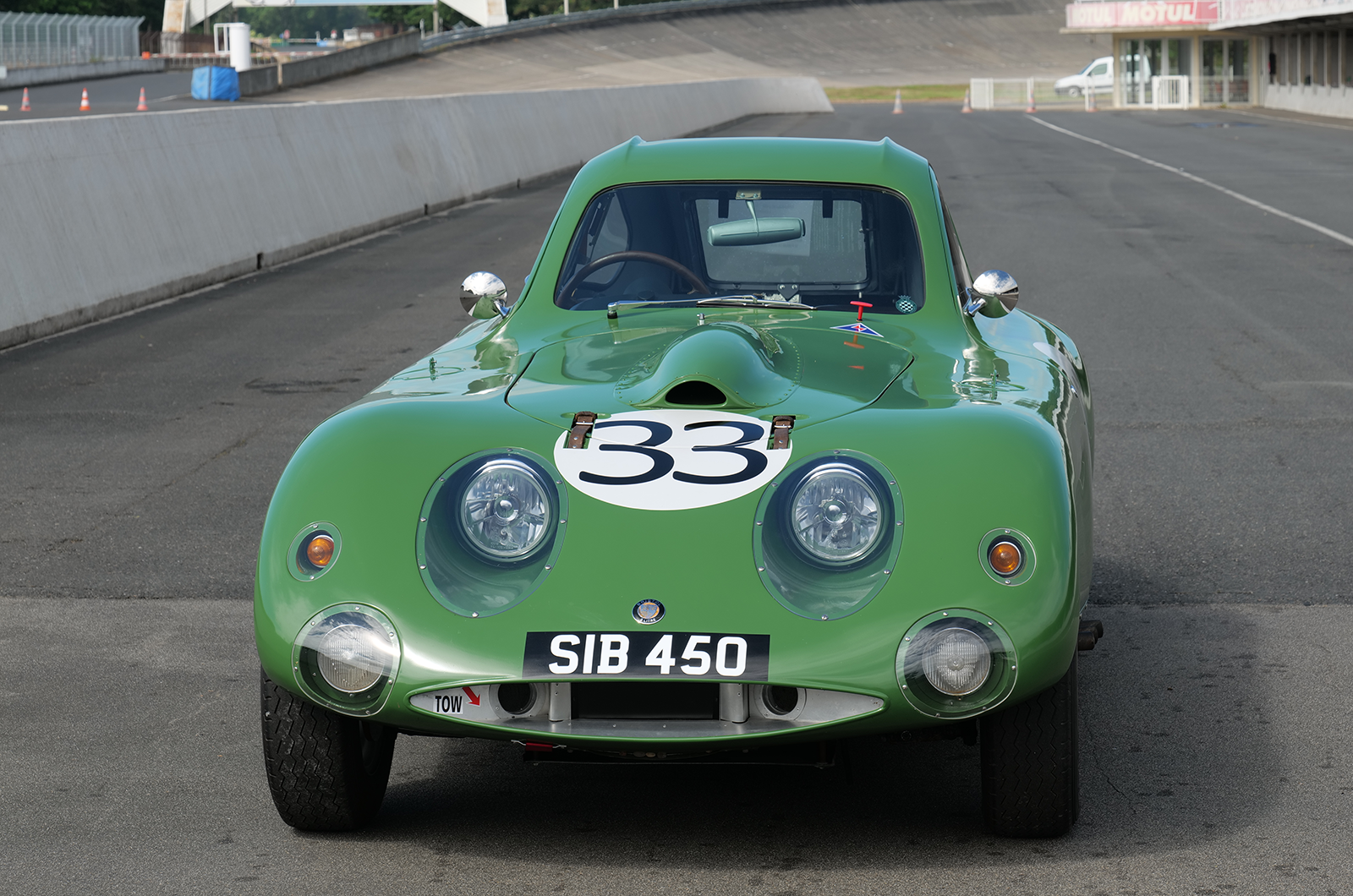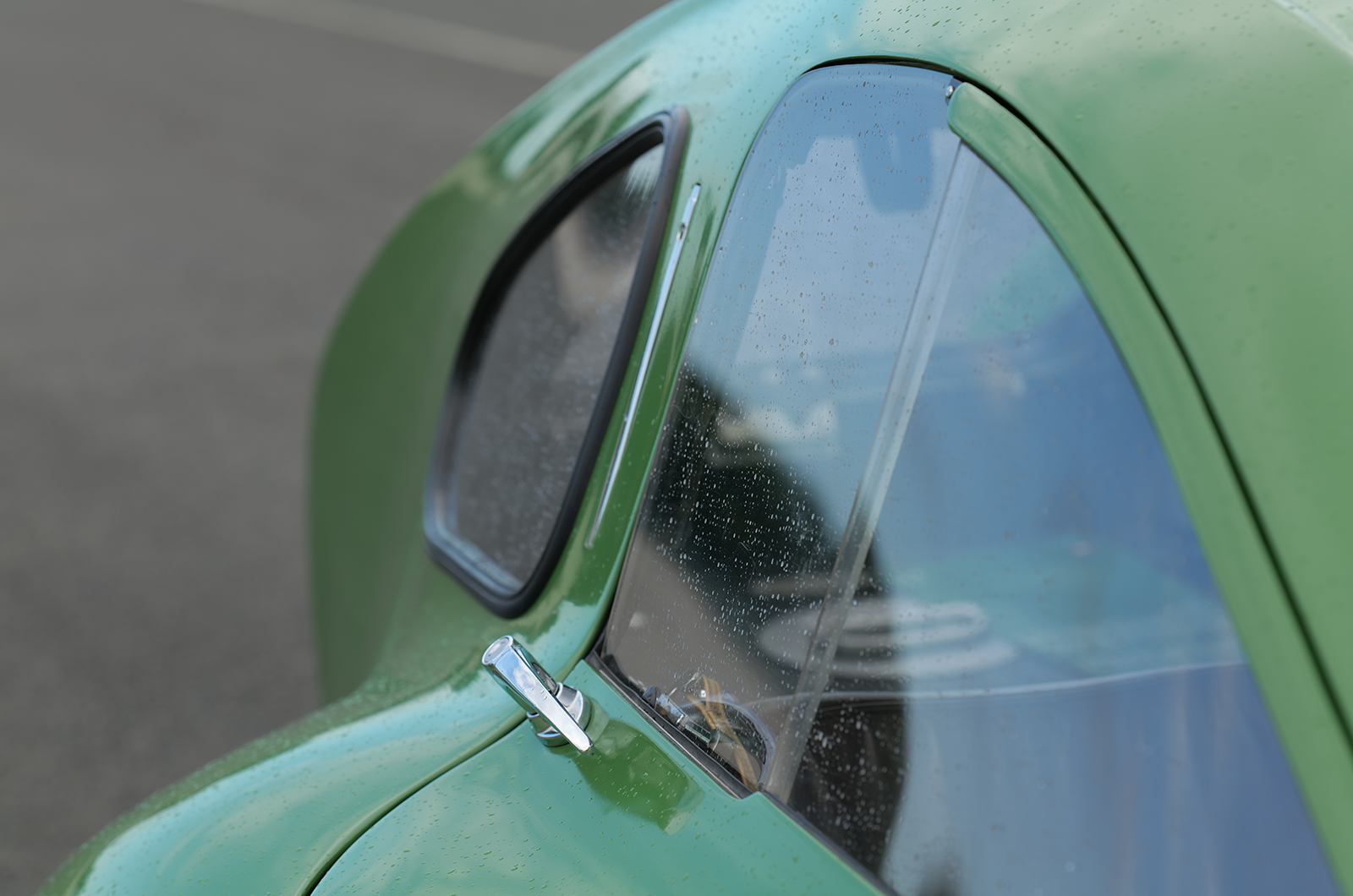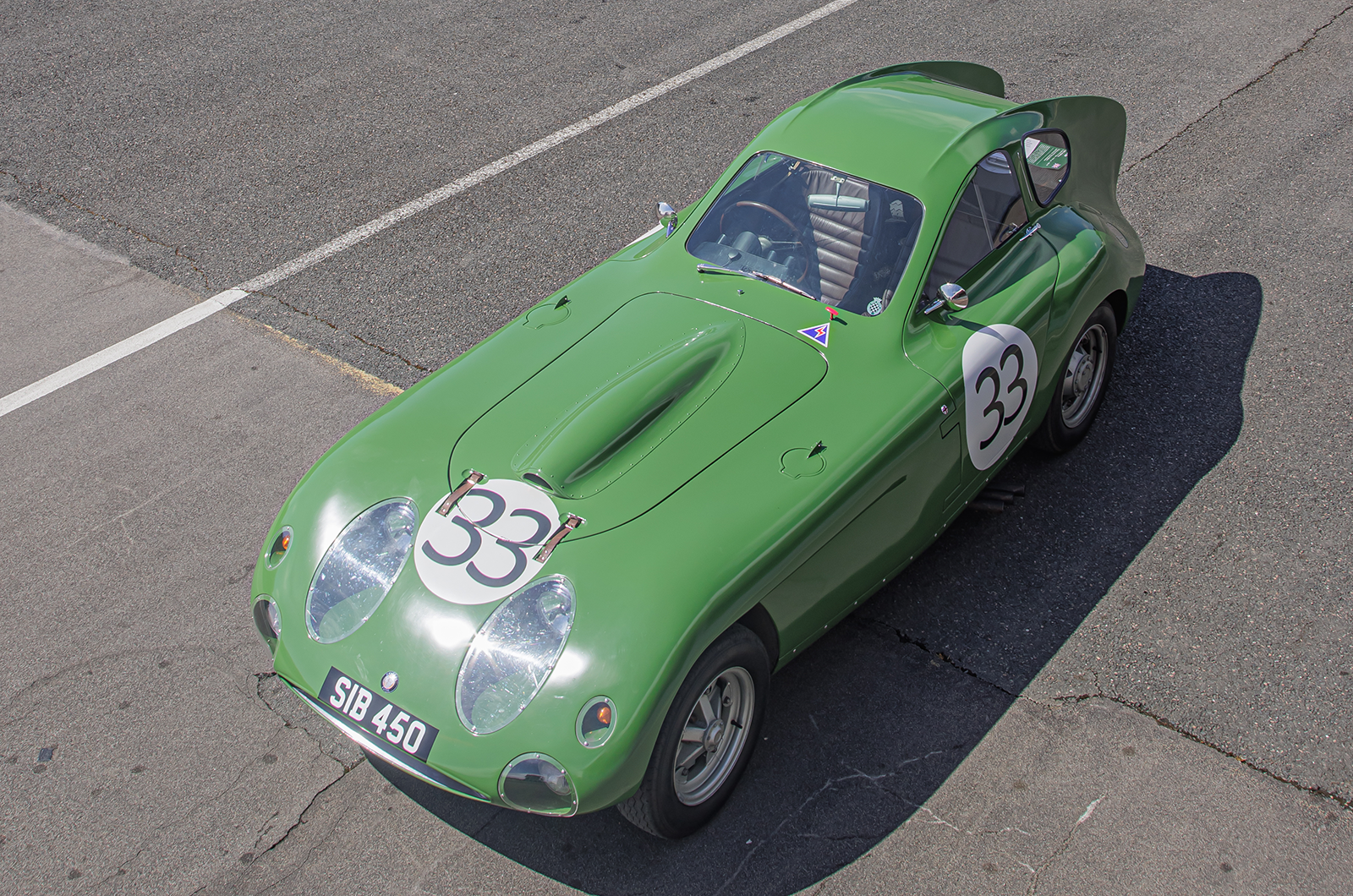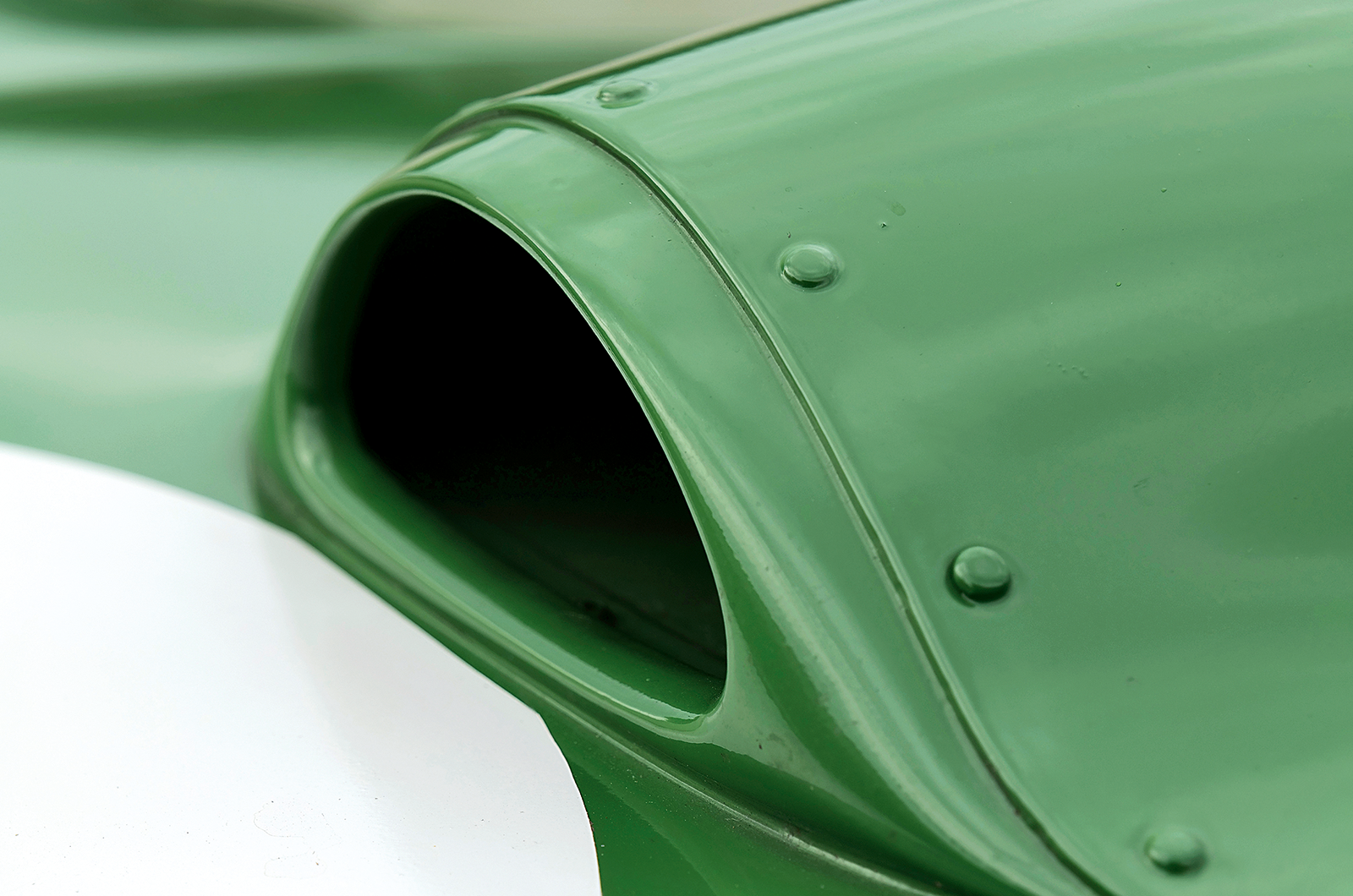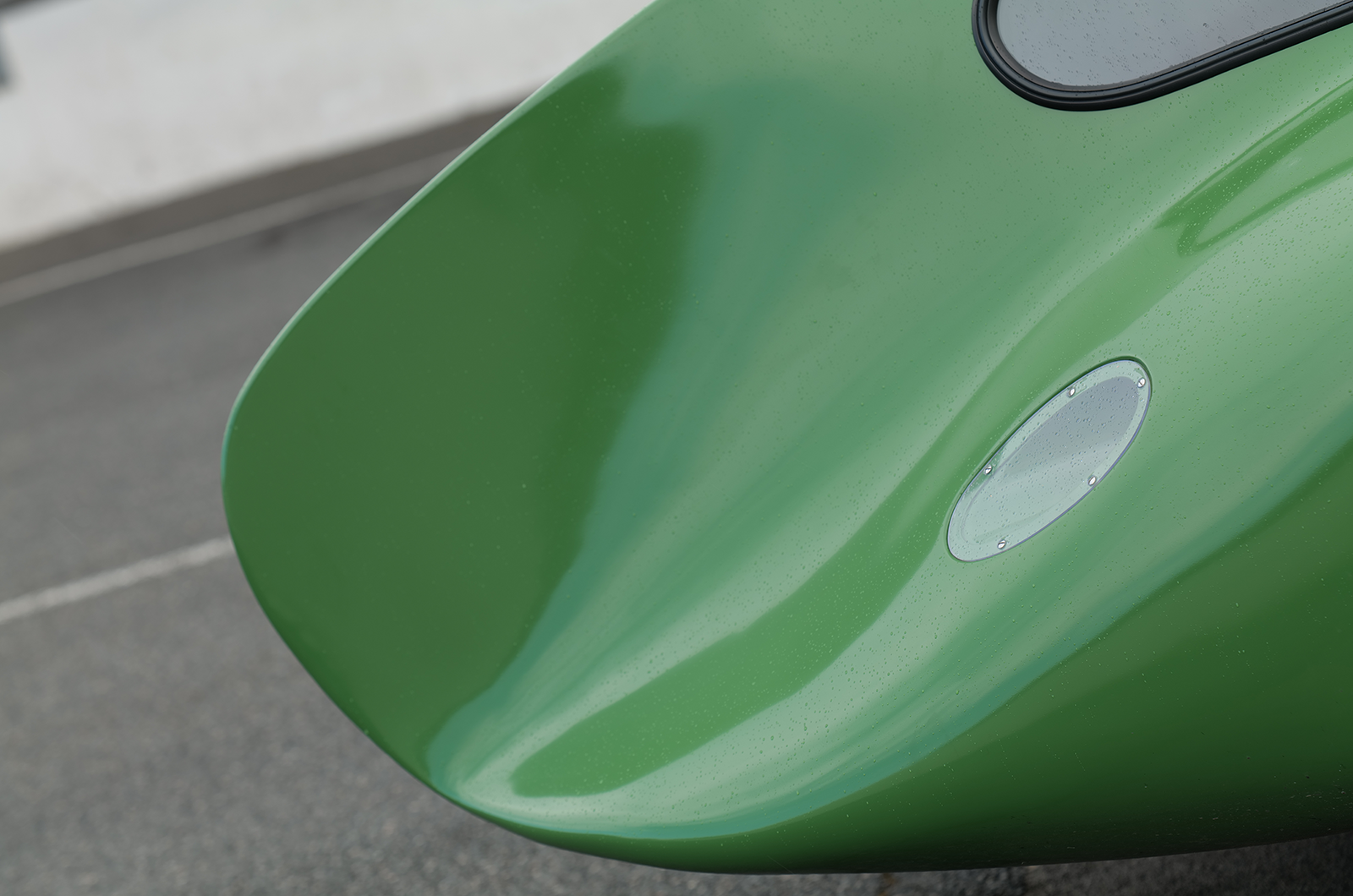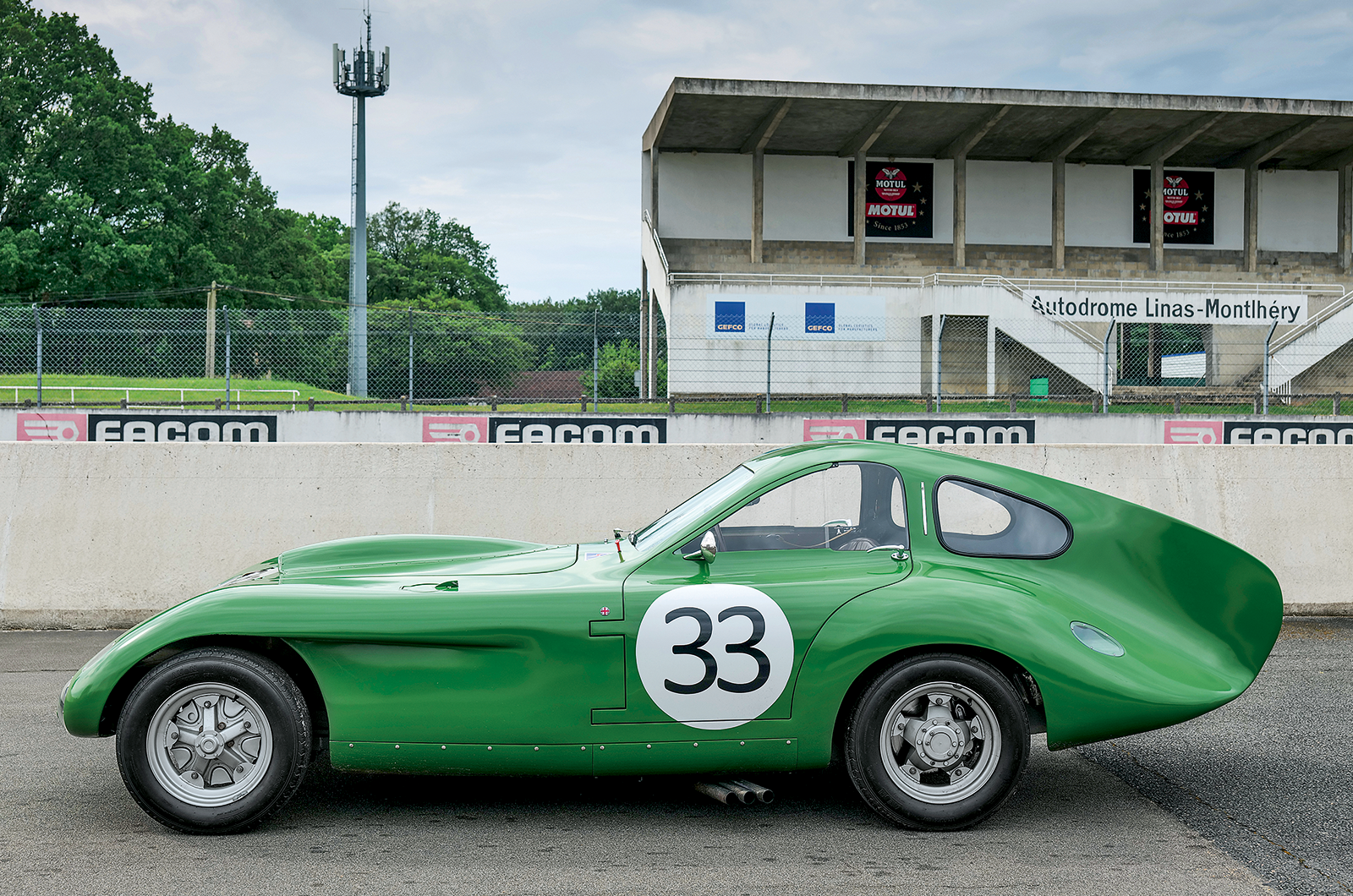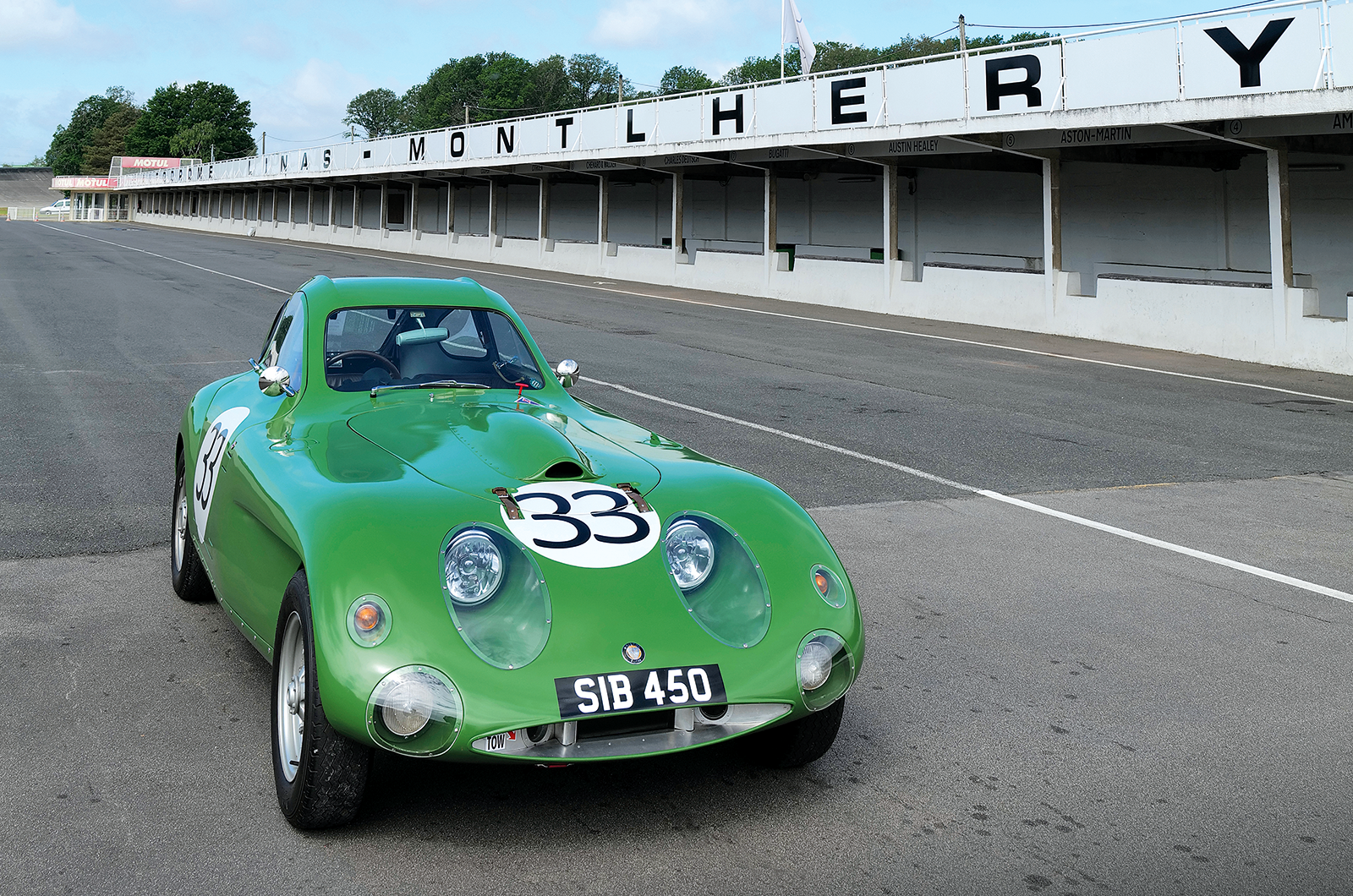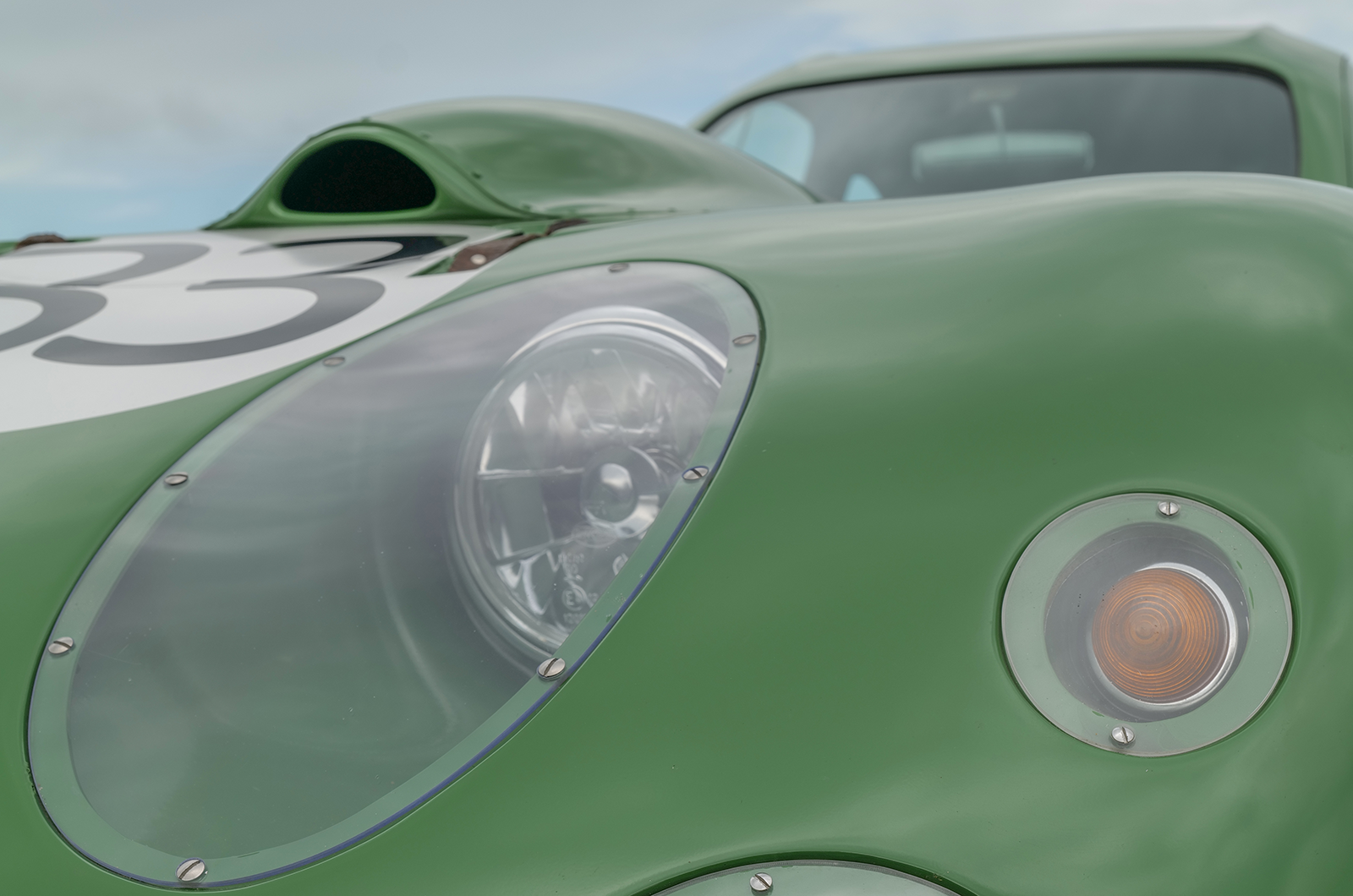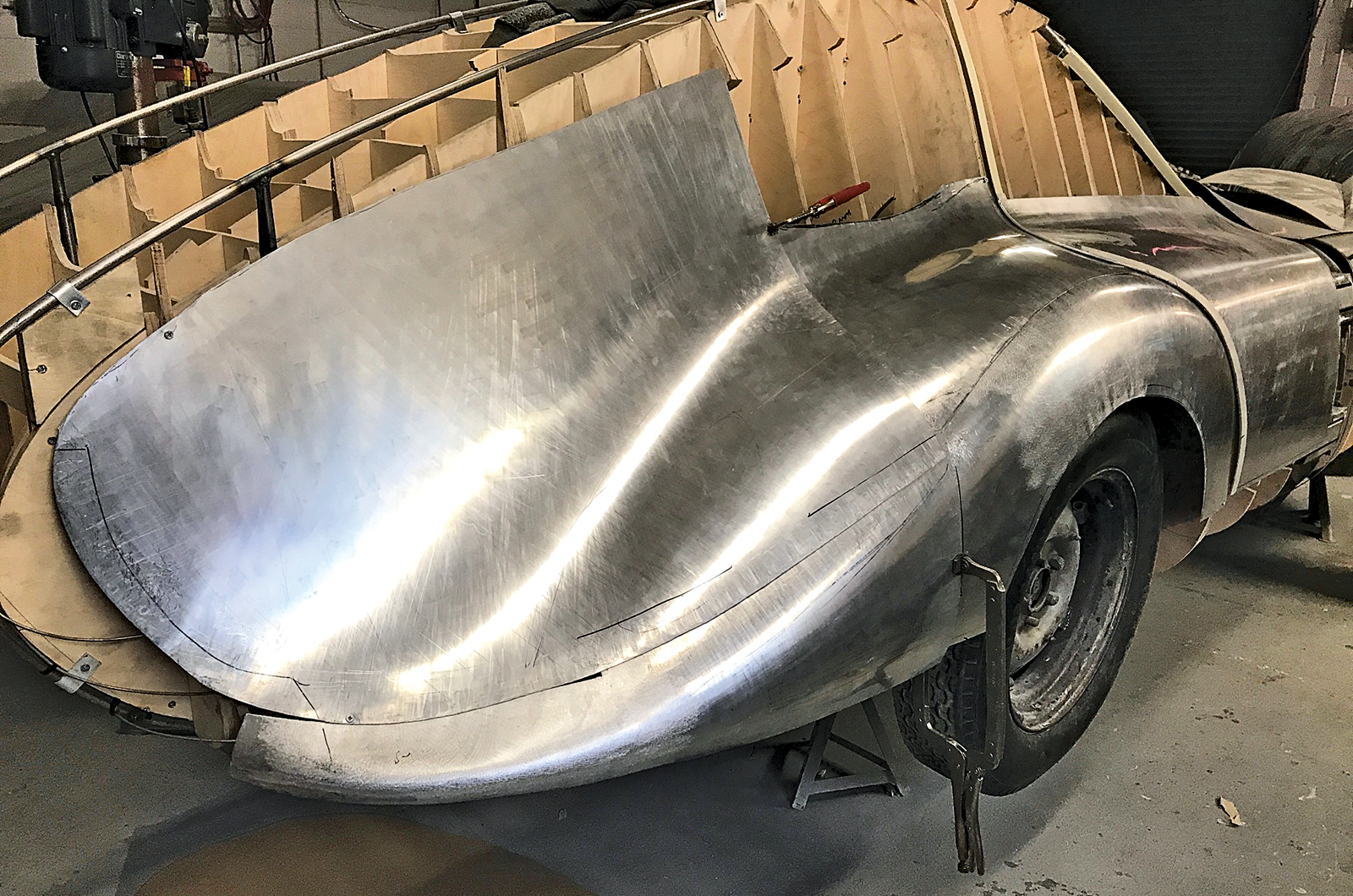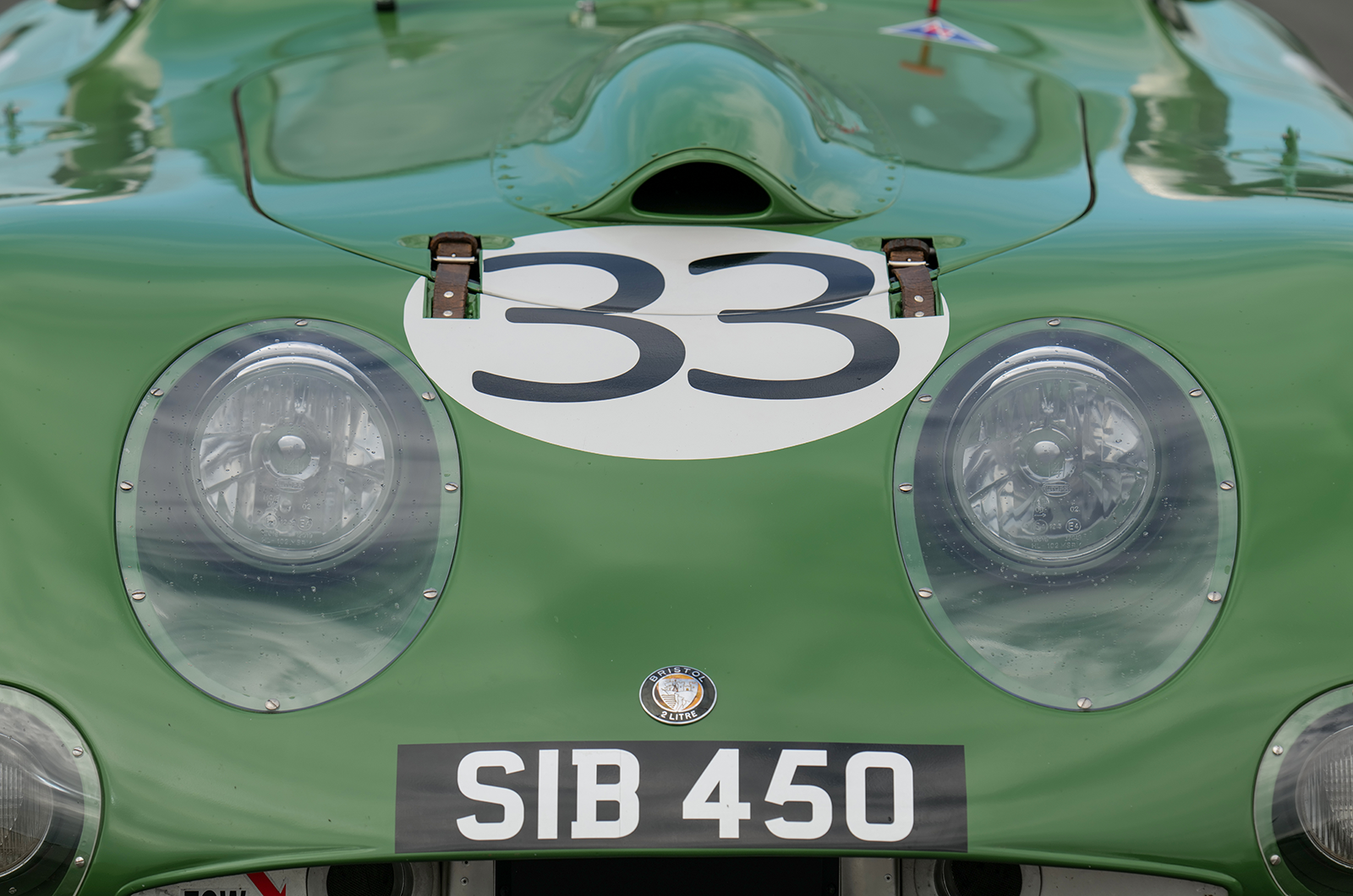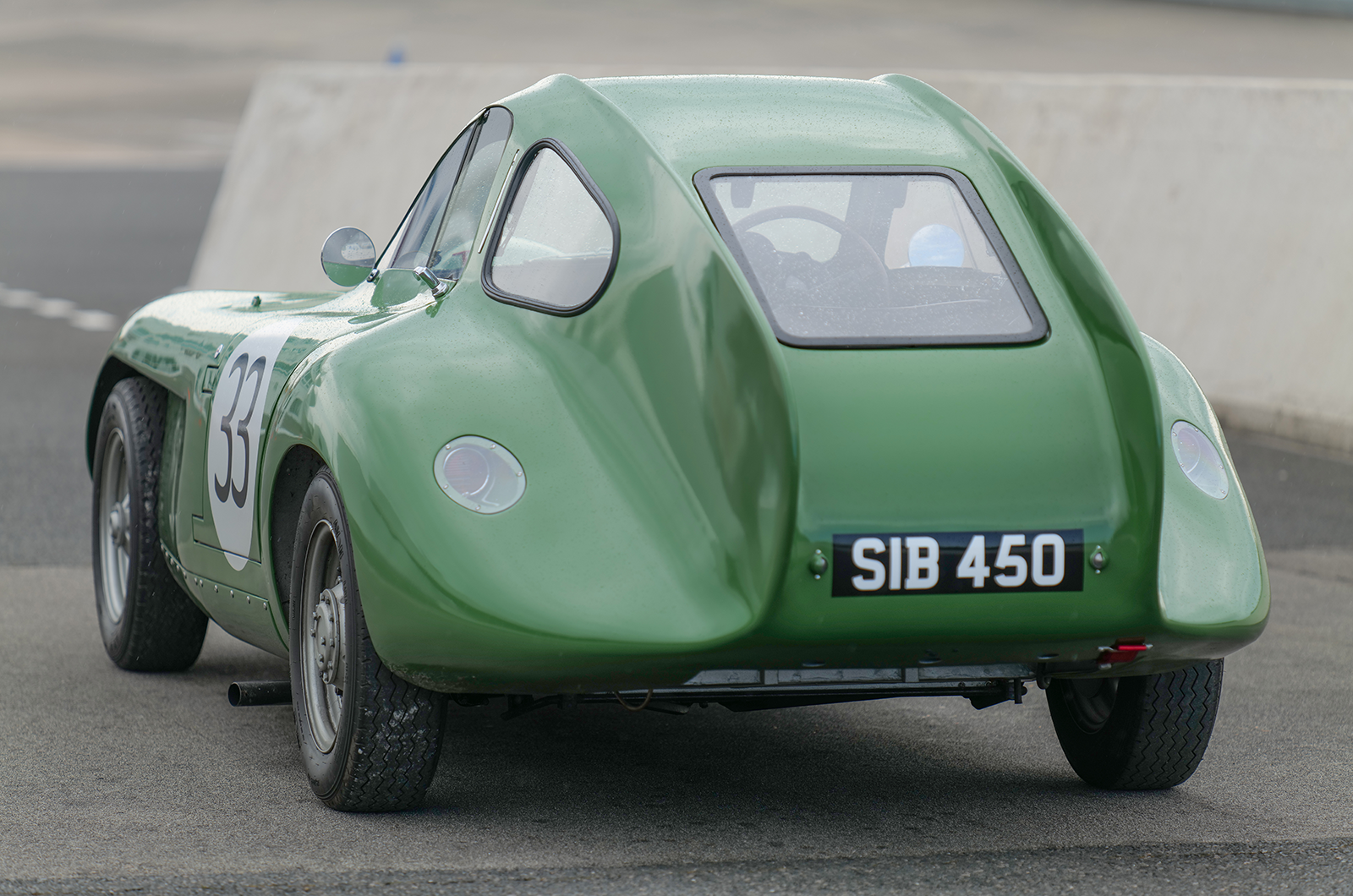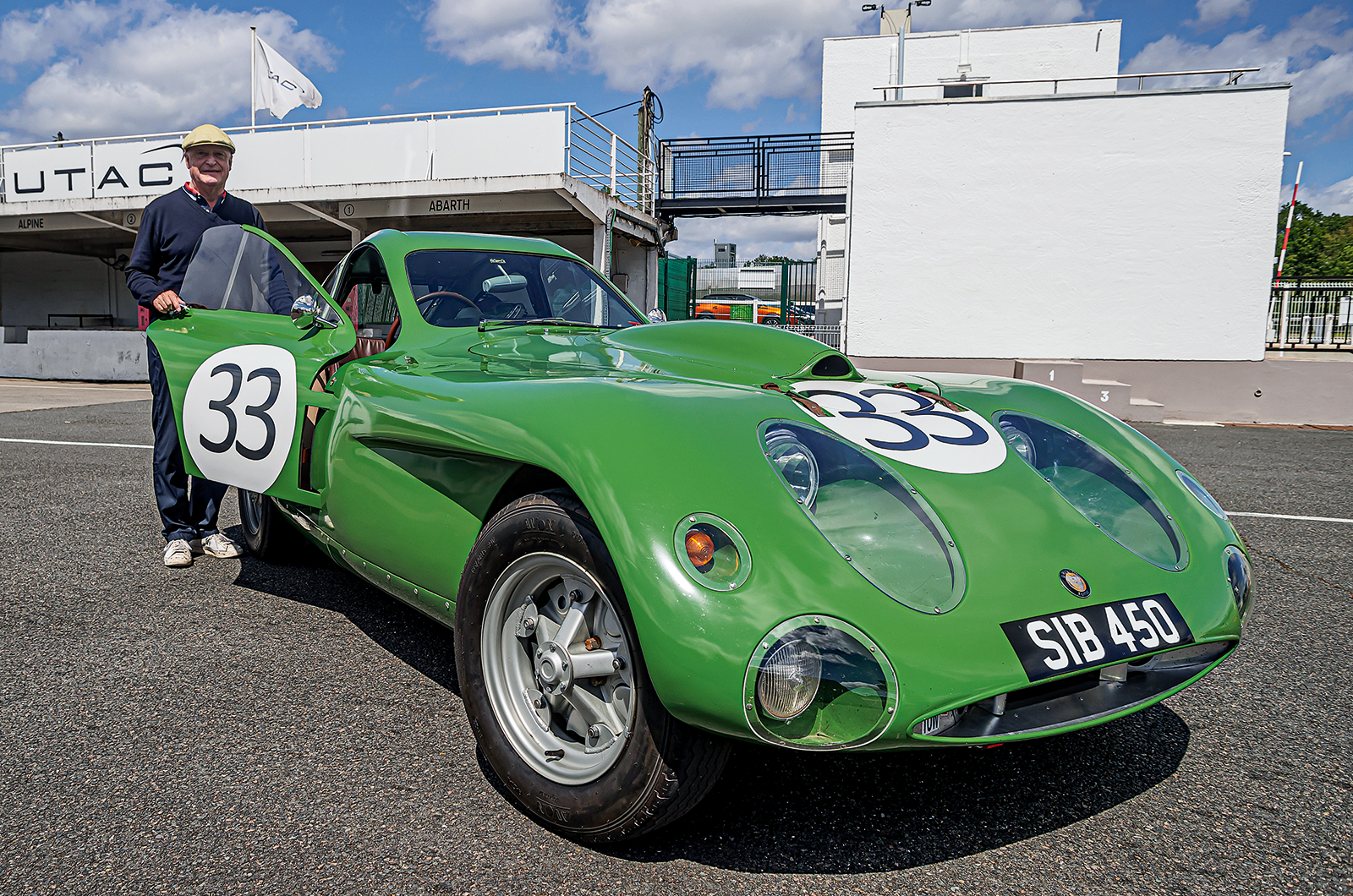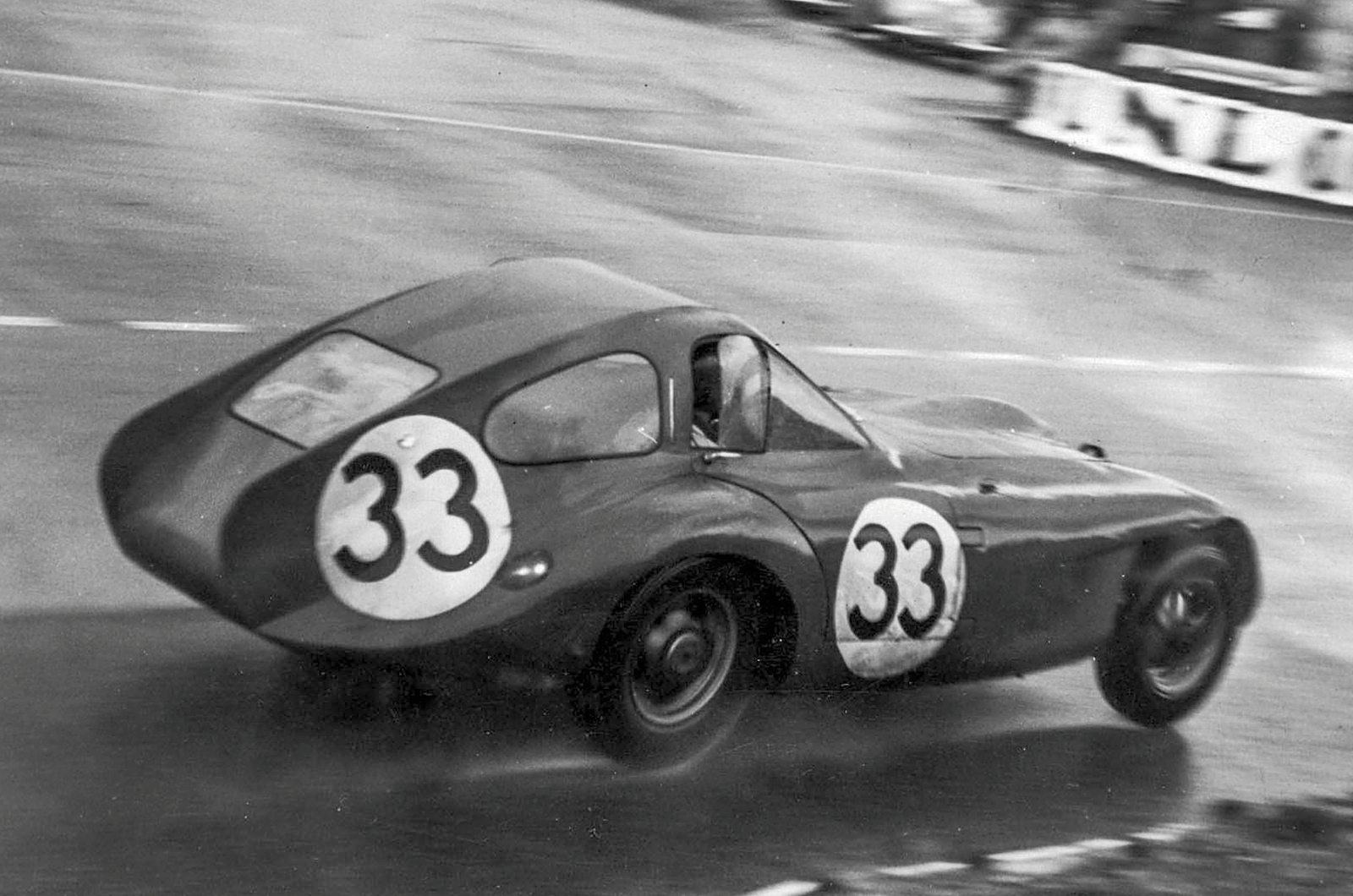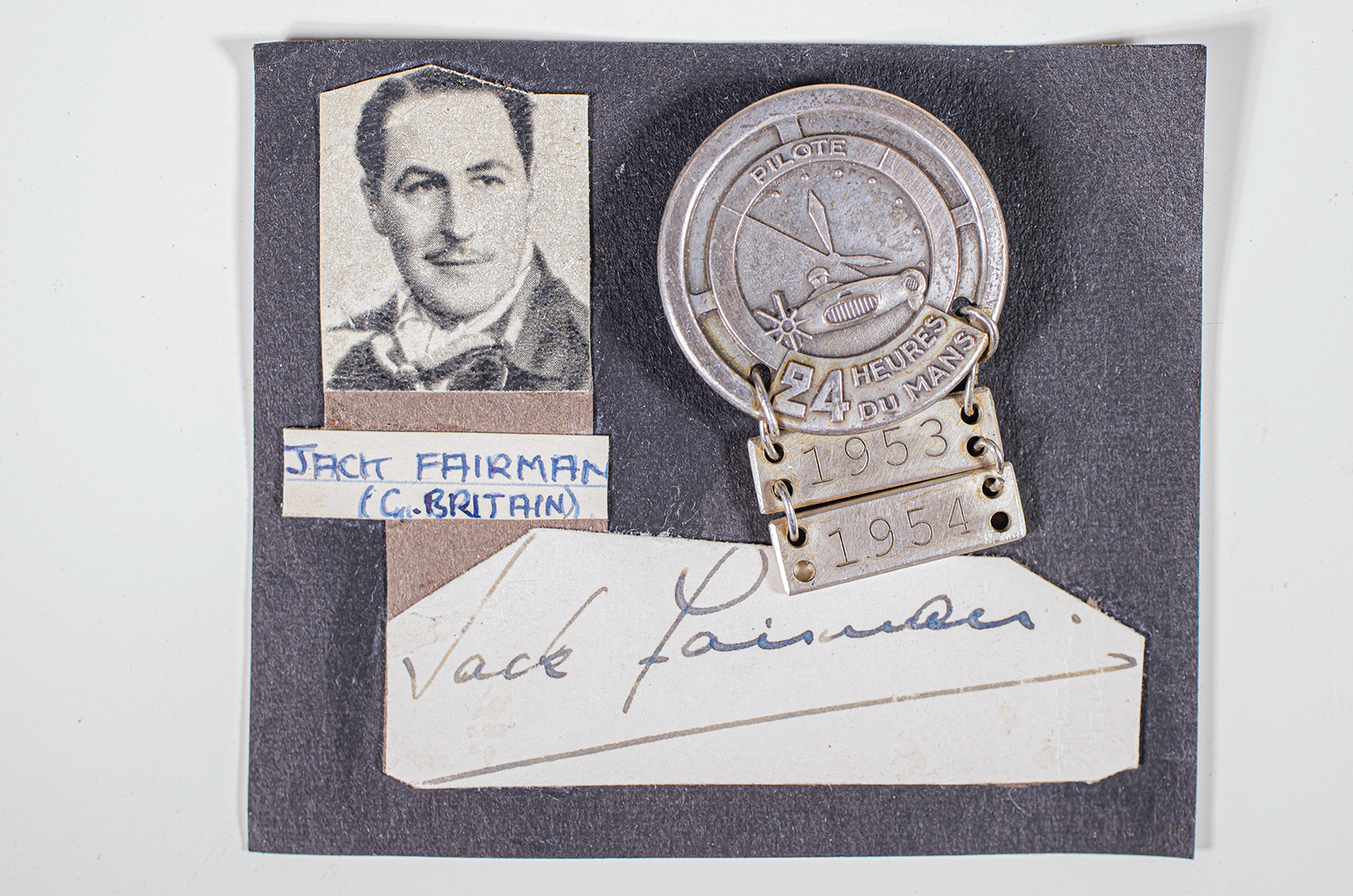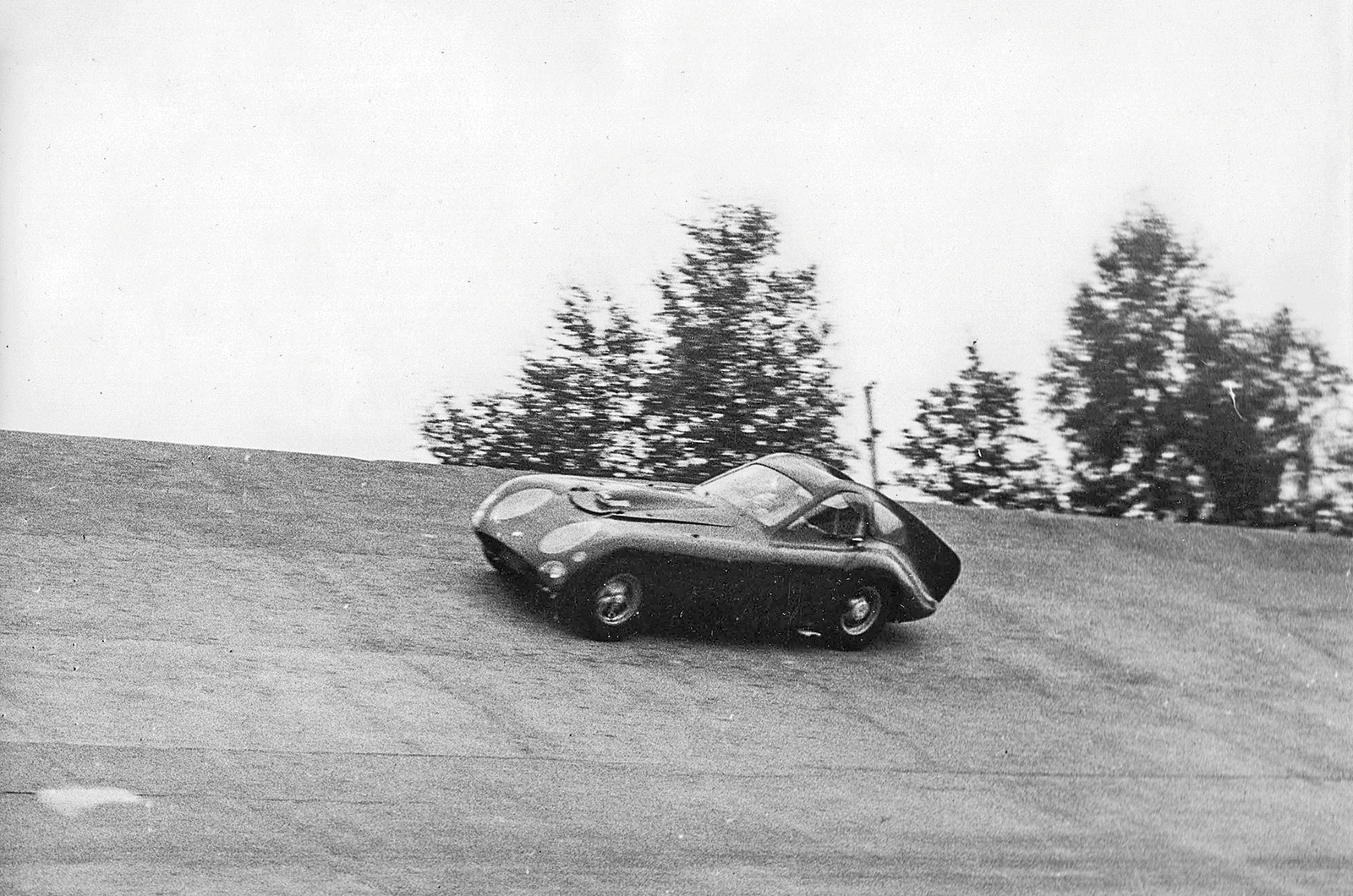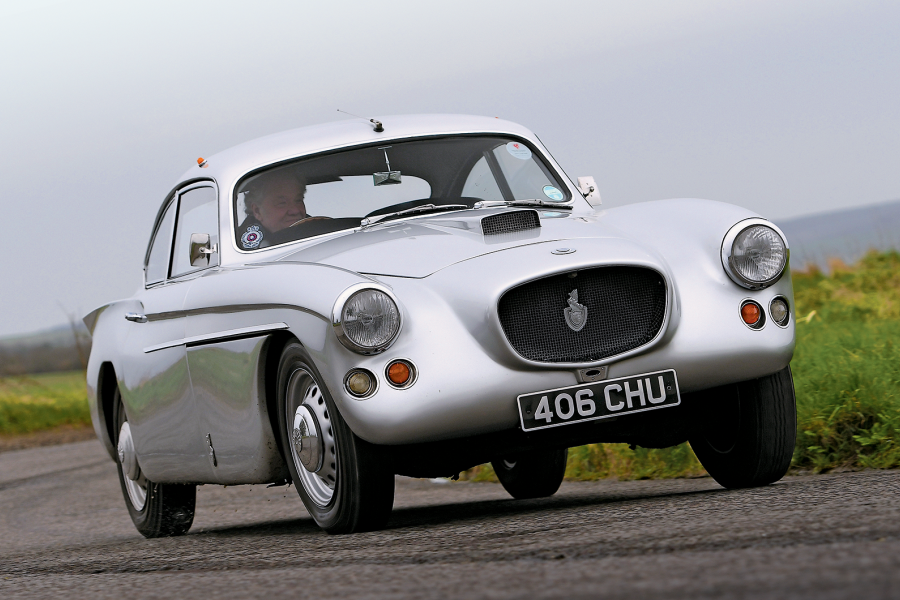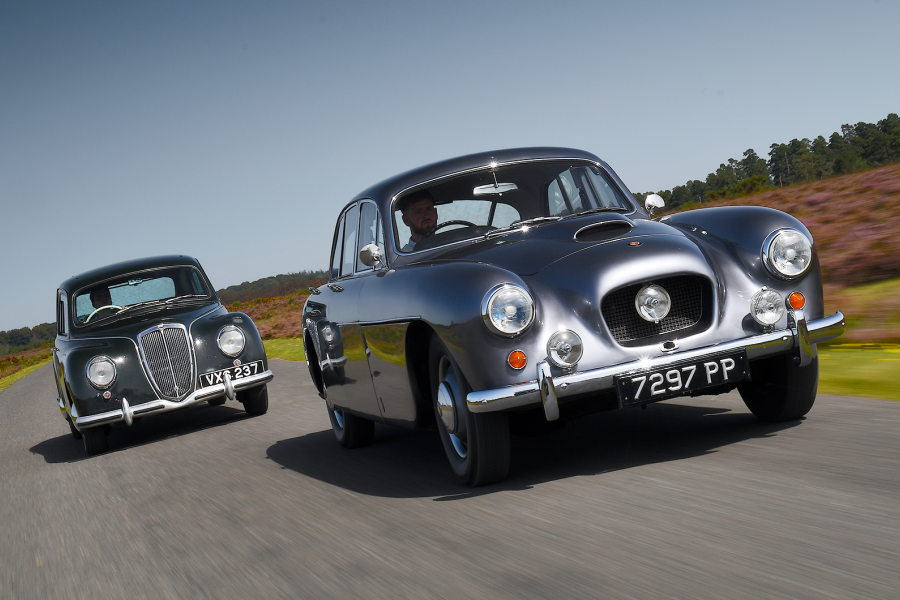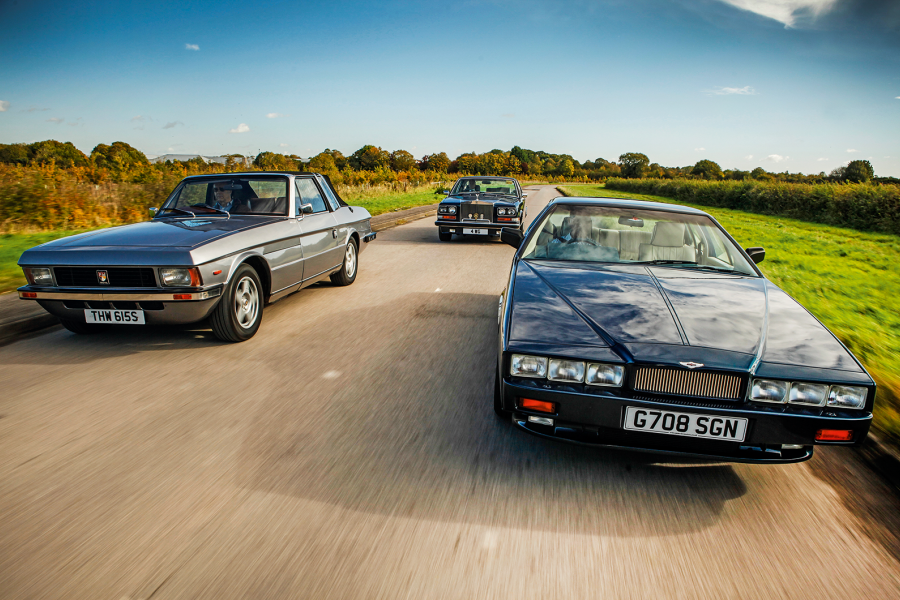The 450’s first outing was at Goodwood, at a Bentley meeting, for a test run. It met with great success, while not failing to intrigue the participants.
It was out again at Silverstone in August 2021, as well as at Castle Combe, before heading to France for its debut at Rétromobile, where it was the talk of the show.
“Obviously we were at the Le Mans Classic in July, and I look forward to driving it on the main circuit and better understanding the sensations experienced by the Bristol drivers, the real heroes,” says Boré.
The car’s lines, in particular its rear fins, are more elegant in the metal
Today we’re at Montlhéry, the location for the 450’s record-setting test outing in October 1954, for a rare turn behind the wheel of the Le Mans.
In the cramped cockpit, it feels a bit like sitting in an aquarium until the race-spec straight-six starts with a thunderous noise and, after a 68-year wait, the Bristol tiptoes out on to the historic circuit.
Following a few laps to warm the fluids, we start to pick up the pace and once up into fourth, a small switch on the dash allows you to flick in and out of overdrive.
The steering becomes lighter but remains precise as the pace increases. Attacking the banked turns, it tracks to the millimetre and holds its line faithfully.
Olivier Boré (pictured) created the car along with Bristol specialist Andrew Mitchell
The overall feeling is of a stable and balanced car – this is a reproduction, but so true to the original that it’s easy to imagine the drivers in period enjoying much the same sensations.
For its owner, and all those who see the reborn 450 Le Mans, its extraordinary form is a key part of the accomplishment.
It brings back to life an example of what imaginative engineers could create at a time when the science of aerodynamics was still in its infancy.
Words: Serge Cordey/Christophe Gaillard
Images: Patrick Lévèque
Thanks to: UTAC, for access to the historic Montlhéry autodrome; Mitchell Motors
Landing Le Mans victory
Bristol entered three cars at Le Mans in 1954, finishing a very creditable seventh, eighth and ninth, and taking a win in the 1500-2000cc category
The Bristol Aeroplane Company diversified its post-war position with Bristol Cars in 1947.
With the introduction of the 400, it was decided that competition was the best way to promote the company, and the target was Le Mans.
Bristol held ready-made ingredients for success. The powerful BMW-derived six-cylinder engine had proven itself in competition, with the English Racing Automobiles (ERA) team having used the unit in Bristol specification for its cutting-edge G-type Formula Two car.
Its advanced, lightweight, magnesium-tube frame had failed to inspire the racing scene, but its potential was difficult to deny, so Bristol designer David Summers was tasked with giving it a Superleggera-style, wind-tunnel-tested coupé body.
A shakedown run of the 1954 Le Mans car at the Montlhéry circuit in October ’53 resulted in six Class E records with Lance Macklin and Jack Fairman at the wheel
In 1953, the team took four cars to Le Mans, but the entries were not to reach the chequered flag.
The Lance Macklin/Graham Whitehead car suffered engine failure, and a crankshaft defect condemned the Tommy Wisdom/Jack Fairman car to a fiery end at the trackside.
Undeterred, the team showed up at the 12 Hours of Reims three weeks later. There, it achieved a much more satisfactory result: Wisdom/Fairman came fifth, winning the 2-litre category, ahead of the Pozzi/Picard Ferrari 166.
Hopes were high for the 1954 season. The bodywork was refined and adapted to the dimensions of the chassis, while also being equipped with scalloped front wings to promote cooling of the brakes, as well as reprofiled head- and tail-lights.
To test its new car, the team went to Montlhéry where, on 6-7 October, in the hands of Fairman and Macklin, the car set six Class E records, including a six-hour average of 115.43mph.
Jack Fairman piloted one of the Bristol Le Mans car alongside Tommy Wisdom
It was great material for Bristol’s marketing department back home.
As Le Mans approached, Ferrari, Jaguar and American newcomer Cunningham were favourites. Bristol had developed a special cylinder head with six intake ducts, to take three twin-choke carburettors, resulting in 155bhp at 6000rpm.
The new 450 coupé proved very fast and was clocked at 150mph on the Mulsanne Straight. The drivers also praised its stability.
“On the straight, a gap in the woods caused a strong crosswind,” reported Peter Wilson. “While the 450’s trajectory was only slightly disturbed, the other competitors suffered a violent effect.”
The three cars lapped consistently, with the only drama being in the middle of the night, when Fairman’s car steered off the track to avoid a competitor in difficulty: the damage was minimal and, after a quick pitstop, car number 33 started again.
A poster for the 1954 24 Hours of Le Mans race
On Sunday, at 4pm, the three cars crossed the line in unison: car number 35 of Wilson/Jim Mayers was seventh overall and first in the 1500-2000cc class, number 33 of Tommy Wisdom/Jack Fairman was eighth, and the 34 car of Mike Keen/Tommy Line was ninth.
Bristol Cars declared itself to be the only manufacturer to have all of its cars finish, but two DB Panhard HBRs and a single Triumph could have made the same claim. Nonetheless, it was an exemplary result.
For 1955, it was decided to turn the cars into roadsters after the drivers reported having issues with condensation, heat and noise from the enclosed cabins.
The open cars were even faster, and on 11 June 1955 they finished in exactly the same places as in ’54: seventh (Wilson/Mayers), eighth (Keen/Line) and ninth (Wisdom/Fairman), with a higher average speed and 2-litre category honours again.
The 1954 Le Mans car on the Montlhéry banking in ’53
But the awful accident of Pierre Levegh’s Mercedes overshadowed the event, and the Bristol team donated its winnings to a support fund for the victims.
A few weeks later, Bristol announced its withdrawal from competition, owing not just to the 1955 Le Mans tragedy but also troubles closer to home, with the Bristol Aeroplane Company reeling in the wake of its ill-fated Brabazon commercial airliner project.
All but one of the racers were destroyed, and while chassis 11 survived, only now has a full-scale coupé returned to join it.
Enjoy more of the world’s best classic car content every month when you subscribe to C&SC – get our latest deals here
READ MORE
Peugeot 402 Spécial Sport: Darl’mat’s Le Mans dream
On track in the unique DB created to win at Le Mans
Behind the scenes of the last days at Bristol Cars

